Do you use loose pigments? Do you know what they are? Do you like them? Loose pigments can easily be described as crushed or loose eye shadow, with very high color payoff – they’re a bit on the intense side. It’s highly likely that you’ve seen pigments, thought they were just oh so pretty but…maybe you weren’t sure how to use them. This post will be all about pigments, and remember to comment if you have any questions!
NYX Loose Pearl Eye Shadows were the first ones I ever tried – in December 2012. Pictured above are: Grass, Ocean Blue, and Lilac. When I first purchased these my makeup skills were still ‘under construction’, so I honestly had no idea that I was supposed to wet them and then press them into the lid. So there I was thinking “Why do these look so frosty? Why won’t they blend into the crease?” Anyways, I finally figured out how to go about using these as of last year and I’ve been having a blast! These NYX loose shadows are really pigmented, and more importantly very affordable, they’re about 3USD on their website.
When applied: Grass is a green shade with a hint of gold pearl and this causes it to almost appear close to lime green. Ocean Blue as the name suggests is simply a metallic blue, not as bright as cobalt blue and not as dark as navy blue. Lilac is my least favourite, it’s a frosty lilac shade, and it works very well with purple/blue/pink eye looks.
(Picture on the left, going clockwise: MAC’s Melon, MAC’s Tan and MAC’s Rose), (Picture on the right, going clockwise: Rose, Tan, Melon).
MAC pigments are the other ones I’ve tried, and yes they are all they’re cracked up to be! 20CDN might be a bit much, however given the amount of product that comes in the container and the fact that a little goes a long way I think it’s worth it. Also, MAC now has a few of their pigment shades Sized to Go, so it’ll be about 12CDN before tax for that travel size – which should also last for a pretty long time. These are super pigmented and I find that they have better longevity when compared to those by NYX.
When applied: Rose appears a pink with a slightly orange/coral undertone and a hint of gold. Tan resembles a shimmery taupe shadow in crushed form, still a very pretty colour to use with smokey or plum eye looks. Melon is my favourite, in some lighting it looks like a very yellow gold, and other times it looks like a very pretty champagne colour.
How to use/apply pigments:
- Spritz a little water or setting spray on your ring finger, lightly pick up a small amount of pigment on your finger and then apply to your lid. Then go ahead and build it up to your desired intensity.
- Use an eye brush with bristles that are tightly packed. Spritz a little water on the brush, then dip this into the pigment, feel free to spritz a little more water in order to avoid a mess.
- Personally I use a flat, stiff concealer brush to place my pigments on the lid and it works like a charm.
Tips and Tricks:
- If you plan to do an eye look using pigments, do your eye makeup first and then follow up with your usual foundation routine. It’s harder to clean up if you do your foundation first, because the fallout from the pigment then sticks to your under eye concealer.
- Apply your transition colour by blending it into the crease first, then apply your pigment. After this remember to blend both the pigment and crease colour together.
- If you want a look that’s a little less dramatic, apply a neutral lid colour first and then only pack a little pigment on top of this colour.
- Whether or not you’re going for a dramatic look, begin with a small amount of pigment and then build up intensity – it’s very hard to fix your eye makeup if you’ve used too much pigment.
- If you want to use pigments for a slight brow highlight or for a pop of colour on the inner corner then use a fluffier brush – not one that packs colour onto the eyes.
I did swatches of the pigments mentioned to provide a better idea of how they look once they’re out of the container (pardon the poor lighting)
Pictured above: Ocean Blue, Grass, Tan, Rose, Melon and Lilac.
I hope this post helped you understand how to use your pigments, or allowed you to decide whether or not you’d like to begin using them!
Toodles,
Tal 🙂

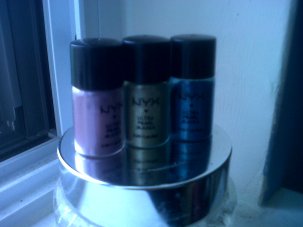
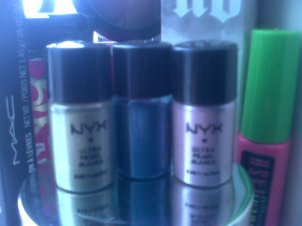
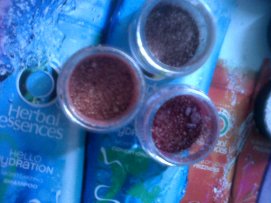

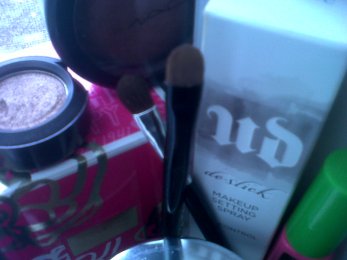
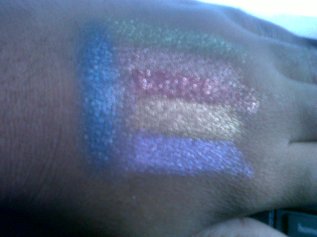
Pingback: MAC Mineralize Blush in Lovejoy | Beauty and the Brows
Pingback: MAC vs. NYX: Eyeshadow Edition | Beauty and the Brows
Pingback: MAC vs. NYX: Blush Edition | Beauty and the Brows
Pingback: Makeup for Beginners | Beauty and the Brows
Pingback: Real Techniques Core Collection | Beauty and the Brows
Pingback: Maybelline Color Tattoo in Electric Blue | Beauty and the Brows
Pingback: MAC Mornings | Beauty and the Brows